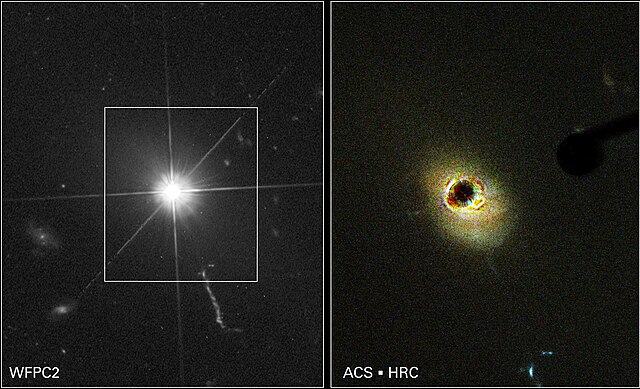James Edward Gunn is the Eugene Higgins Professor of Astronomy at Princeton University. Gunn's early theoretical work in astronomy has helped establish the current understanding of how galaxies form, and the properties of the space between galaxies. He also suggested important observational tests to confirm the presence of dark matter in galaxies, and predicted the existence of a Gunn–Peterson trough in the spectra of distant quasars.
James E. Gunn (2000 photo)
A quasar is an extremely luminous active galactic nucleus (AGN). It is sometimes known as a quasi-stellar object, abbreviated QSO. The emission from an AGN is powered by a supermassive black hole with a mass ranging from millions to tens of billions of solar masses, surrounded by a gaseous accretion disc. Gas in the disc falling towards the black hole heats up and releases energy in the form of electromagnetic radiation. The radiant energy of quasars is enormous; the most powerful quasars have luminosities thousands of times greater than that of a galaxy such as the Milky Way. Quasars are usually categorized as a subclass of the more general category of AGN. The redshifts of quasars are of cosmological origin.
Artist's rendering of the accretion disc in ULAS J1120+0641, a very distant quasar powered by a supermassive black hole with a mass two billion times that of the Sun
Hubble images of quasar 3C 273. At right, a coronagraph is used to block the quasar's light, making it easier to detect the surrounding host galaxy.
A cosmic mirage known as the Einstein Cross. Four apparent images are actually from the same quasar.
Quasars in interacting galaxies





